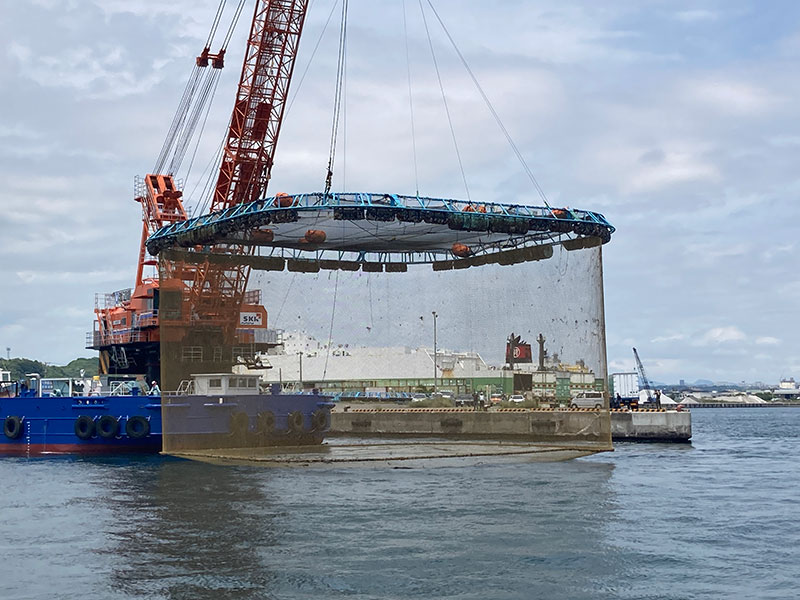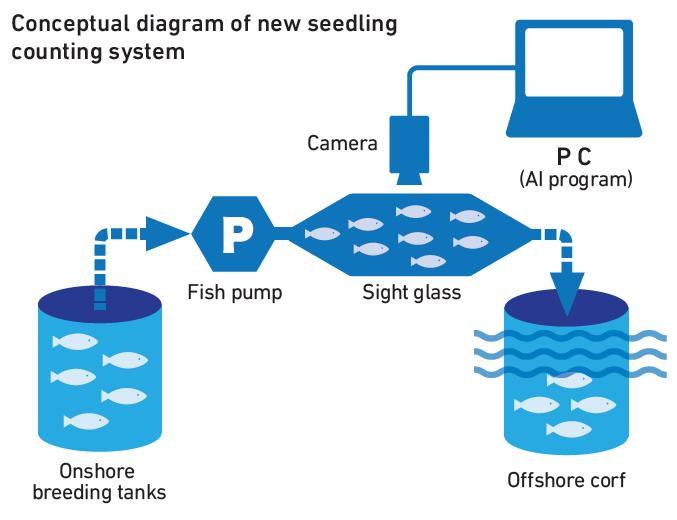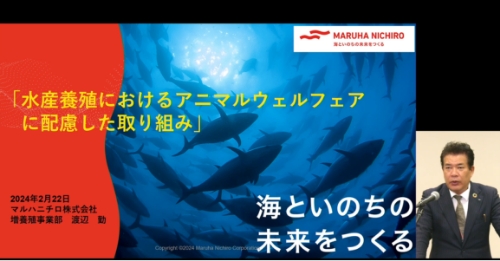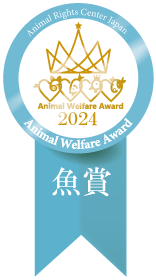Maruha Nichiro Group Policy on Animal Welfare
Maruha Nichiro Group has continued to grow supported by the irreplaceable blessings of nature and its life force, recognizes that taking animal welfare into consideration is an important social issue.
We promote business activities that respect the "Five Freedoms" as defined by the International Organisation for Animal Health (OIE).
The Five Freedoms
- Freedom from hunger, malnutrition and thirst
- Freedom from fear and distress
- Freedom from heat stress or physical discomfort
- Freedom from pain, injury and disease
- Freedom to express normal patterns of behaviour
We believe that consideration for animal welfare is not only for the health of the animals, but also for the health of the people who consume their products. Maruha Nichiro Group will promote the following initiatives in its own business and supply chain, aiming to realize a society in which we can live in better harmony with animals, and provide food that contributes to the creation of health value and sustainability.
Initiatives promoted by Maruha Nichiro Group
- Consideration for animal welfare at Group's own business sites
- Dialogue on animal welfare considerations and collaboration in the supply chain
- Disclosure of information on efforts to improve animal welfare
Main Initiatives
Initiatives at Maruha Nichiro Group Aquaculture Farms
Introduction of Large Floating and Sinking Copper Alloy fish cages to Improve Aquaculture Environment
In 2022, Maruha Nichiro introduced a large floating and sinking copper alloy wire mesh cages for the purpose of improving the rearing environment for farmed fish. Compared to conventional cages, this new system is more environmentally friendly in the following three respects.
- Reduction of stocking density
By increasing the size and volume of the cage, it has become possible to reduce the farming density by approximately 10%. The reduction in stocking density is expected to reduce the risk of disease in farmed fish. In addition, the larger size and volume of the cages have reduced the number of cages required for farming the same number of fish, allowing the fish keeper to spend more time in each cage and to more carefully observe the health of the fish. - Consideration for farming water temperature
The floating and sinking type cages can float and sink in accordance with changes in sea water temperature, enabling fish to be kept under a comfortable temperature for farmed fish. - Prevention of shellfish and seaweed from attaching to the cage
Since the large-sized floating and sinking type copper alloy cage is made of copper alloy, it is possible to control the adhesion of shellfish and seaweed to the cage when compared with conventional cages. This is expected to reduce abrasion injuries to farmed fish caused by shellfish and seaweed adhering to the fishtank. In addition, the Water exchange in the cage is improved, leading to the realization of an environment in which farmed fish can breathe easily.

Fish Measuring Method with Reduced Load on Fish
In the past, length and weight measurements of farmed fish were required when taking the fish out of the fish cage, but Maruha Nichiro has introduced a system that enables length and weight measurements without leaving the fish in the cage, using an AI fish measuring camera.

Development of an Original Seedling Counting System that Reduces the Burden on them
Maruha Nichiro is engaged in the production of yellowtail and amberjack seedlings(juvenile fish). When transferring juvenile fish raised in land-based cages to offshore waters (operation name: offshore release), the number of fry has been counted by a method called the "gravimetric method". but due to the large load on the fish body and counting inaccuracies, there were problems in optimizing the medicine dosage and breeding density after offshore placement. As a result, the Central Research Institute and Maruha Nichiro Aquaculture Technology Development Center Co., Ltd. have developed a high-precision tail counting system that combines fish pump, specially shaped sight glass, and AI image recognition technology. The introduction of this system is expected to improve the farming environment for juvenile fish by "reducing the physical load on fry during offshore release" and "optimizing the farming density and dosage of medication for juvenile fish after release.

Introduction of Automated Vaccination Machines to Reduce Stress
Appropriate vaccination contributes greatly to reducing the use of antibiotics and producing healthy fish. However, in the past, the vaccinator had to hold each fish individually during vaccination, which caused stress to the fish due to human body heat, or the fish got out of line, causing the needle to penetrate an unintended part of the body. The automated vaccination machine introduced in 2023 is expected to reduce the stress on fish during vaccination by sedating the fish with anesthesia prior to vaccination, and vaccinating them by machine rather than by human.
Maruha Nichiro AQUA Inc. introduces automatic vaccination machine (Japanese only)
Initiative Participation to Reduce Antibiotic Use
As a member of SeaBOS (Seafood Business for Ocean Stewardship), an initiative that aims to collaborate and lead science-based strategies and activities to ensure sustainable seafood production and a healthy marine environment, we are working to reduce the use of antibiotics.
In FY2022, as part of SeaBOS activities, three Japanese companies (Maruha Nichiro Corporation, Nissui Corporation, and Kyokuyo Corporation), the Ministry of Agriculture, Forestry and Fisheries, the Fisheries Agency, National Research and Development Agency Japan Fisheries Research and Education Agency, and pharmaceutical companies will launch a study group to promote the development of vaccines in the aquaculture sector, which is important for reducing the use of antibiotics. The Vaccine Study Group was established to promote the development of vaccines in the field of aquaculture, which is important for reducing the use of antibiotics.
Click here for details about SeaBOS
Nikkei Animal Welfare Symposium 2024
With the aim of raising industry-wide awareness of animal welfare, the Maruha Nichiro Group gave a presentation on its animal welfare initiatives in aquaculture at the Nikkei Animal Welfare Symposium 2024 held on February 22, 2024.

Archived Video (Japanese Only)
External Evaluation
In April 2024, Maruha Nichiro received the “Fish Prize” at the “Animal Welfare Award 2024” (sponsored by the NPO Animal Rights Center) for increasing its corporate value to society by disclosing information, including the initiatives it had already taken.


